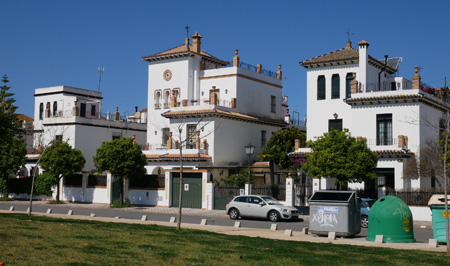
The 1929 Iberoamerican Exposition radically transformed the city of Sevilla, with major projects such a large public park (Parque María Luisa) & the creation of cortas (artificial canals) in the Guadalquivir River. Cortas served several important purposes: shortening the river’s course, providing a means for more rapid water flow & thereby reducing sediment deposit, allowing for better flood control, creating new port facilities & opening new land for development. Although plagued with constant delays, this new infrastructure turned Sevilla into a modern city.
Major construction projects for the Expo required specialized labor & the projected increase in tourism necessitated new & varied hotel space. Both needs were to be met by the Hoteles del Guadalquivir, a compact neighborhood of individual residences where the Guadaíra River emptied into a new canal of the Guadalquivir. Architect Fernando de Escondrillas y López de Alburquerque had previous experience with social housing projects in Madrid, & his Regionalist design seemed perfect. He also foresaw the neighborhood’s re-use after the Expo ended, with houses sold to families & allocations for an eventual market, restaurants & schools.
Although a fantastic idea, problems with coordination in Madrid, extending urban services so far from the city center & lack of adequate materials brought the total number of houses built to just under 400. Many more might have been erected, but problems during construction meant that many homes were released to the public as soon as they were finished & never served as hotelitos. Invested money had to be recovered.
As with all social housing projects, a few design types were repeated over & over for quicker construction. We identified four distinct house designs during our walk, but there may be more. All consist of two levels with a fenced entrance, room for a small garden, a terrace & often a small tower. Naturally owners have modified original designs since 1929, but it’s fun to walk around & see how things have changed. One thing that remains the same is how peaceful, cute & charming this neighborhood is:
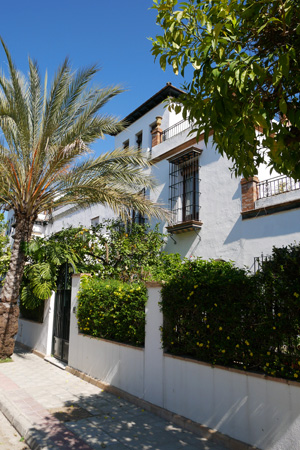
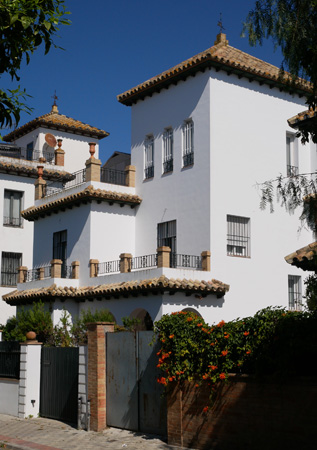
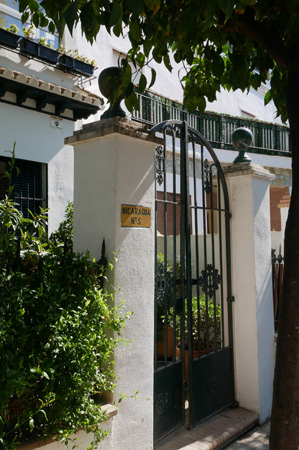
Streets were initially named with letters, but that gave way to new names featuring Spanish rivers (Duero, Tajo, Júcar & Ebro), Central & South American countries (Nicaragua, Panamá, Paraguay, etc.) as well as other place names (Lima, Tenerife, & of note Ifni, a Spanish territory in Morocco at the time these houses were built).

In 1931, houses were sold to the national government in order to maintain the neighborhood. Still poorly connected to the city center, homes were rented to mainly journalists & government employees… anything to keep a resident population. Hit by a few bombs during the Spanish Civil War, damaged buildings were repaired & the whole complex switched hands to the INV (Instituto Nacional de la Vivienda) during the early Franco years. Sold off at discount prices in 1948, residents adopted the new neighbourhood name of Heliópolis ten years later. Many excellent period photographs, organized by decade, can be found on the resident-run forum Asociación Foro de Heliópolis.
The market was built as a triangular building, still functioning today but part of it now houses a gym:
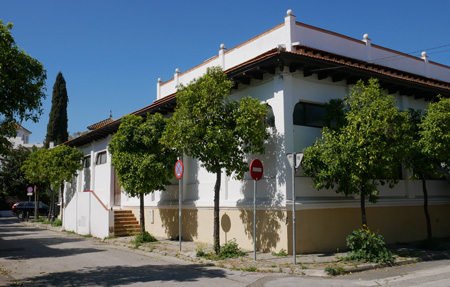

Separate schools for boys & girls were enlarged & placed on the neighborhood perimeter, as was a church dedicated to San Antonio María Claret. Dating from the late 1940s/early 1950s, these were the last major additions made to Heliópolis:
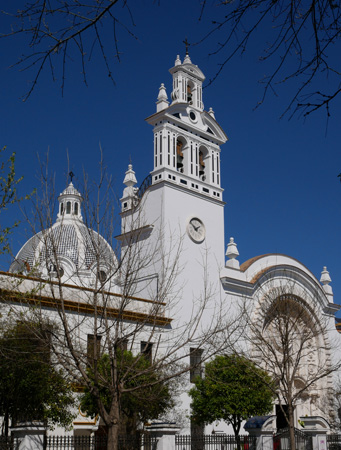
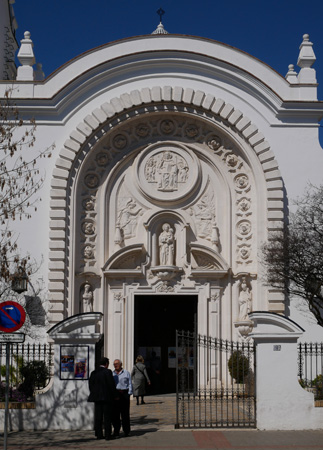
The casino located in the central plaza has been converted into a bar named Avelino with some of its original decoration surviving. Good food, great prices & wonderful local atmosphere on the weekend:

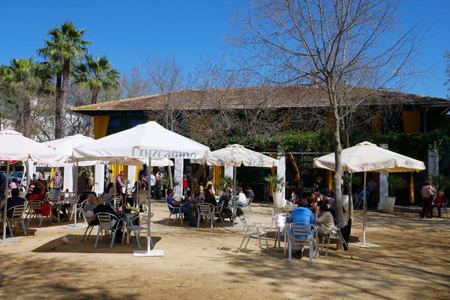

Water overflowed from the Guadaíra River in 1948 & caused significant damage to the area as did another flood in 1962. Sevilla has a long history of trying to control its rivers, so the Guadaíra had its course changed in the 1970s. Finally in 2014 that freed space became part of a 3-km city park, making the area even more attractive than original planners could have ever dreamed:
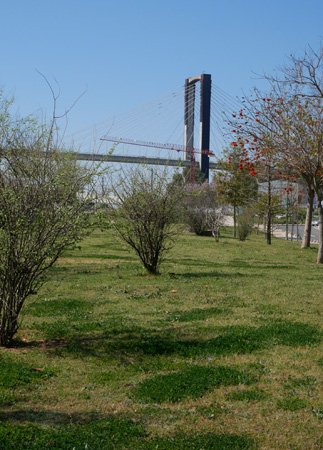
Although off the normal tourist circuit, urban development fans should take the #1, #2, #3, #6, #34 or #37 bus to Heliópolis for a look at how this 90-year old Expo project has been successfully repurposed & incorporated into Sevilla. You’ll likely be the only visitor there!
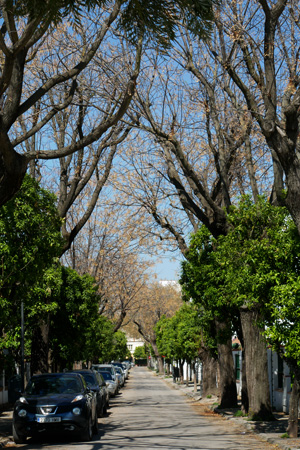
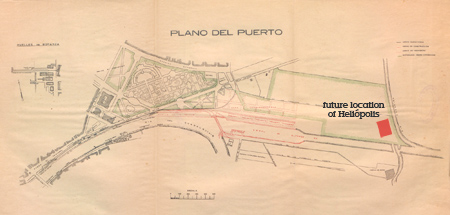

In 1973 I had the distinct pleasure of living in the Heliopolis section of the city of Sevilla, Espana. As a student of Columbus international college located on Aveneda de la Victoria, myself and many other American students and students from around the globe also lived in this section of the city. It was a sheer delight.
The typically Spanish architecture in these homes that were used as dormitories for the students were absolute joys to live in. In this way we were immersed into Spanish culture and we excepted I believe by the native population with great grace and humility. Alas the colleges no more as I believe,It was poorly managed and underfunded to start with yet the experience has left a lifelong love of Spain and the people of severe forever embedded in my heart.
Thanks, Kim, for sharing your wonderful story! You were in Spain at such an important time: the entire country on the verge of major change. Heliopolis is still well-maintained (as I hope the photos demonstrate), & now the houses are quite expensive. But what a privilege to live there in the 1970s! Hope you can return to Spain sometime soon… it’s still a fantastic place. Un abrazo!
I too was at Columbus International College in 1973. I lived in a couple of those beautiful chalets in Heliopolis that the school owned and it was otherworldly for me, just a dream.
Hello Camille – You were there at the same time as Kim! Thank you for commenting & sharing your story as well.